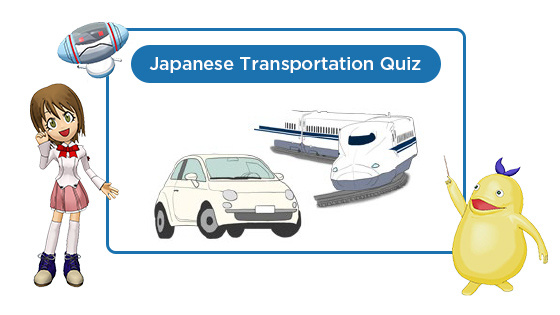Lesson 6Asking Prices - Bus -
Let's see
Transportation
View movie
Explanation through photos
Click (tap) to enlarge and show explanation.
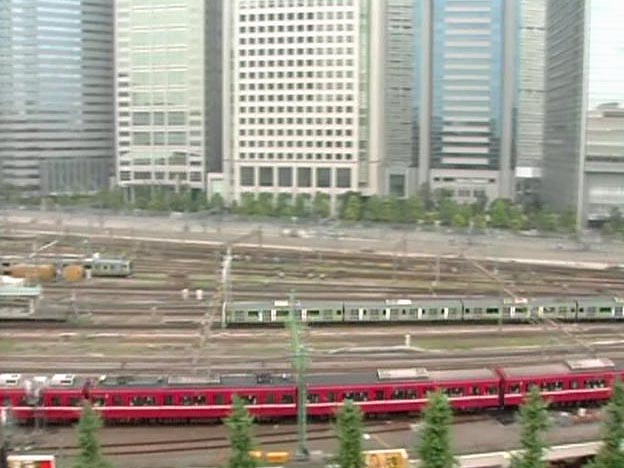 Train 1
Train 1
In Japan, there are many of kinds of transportation, such as trains, airplanes and buses. Among them, trains are the main means of transport for people in Japan.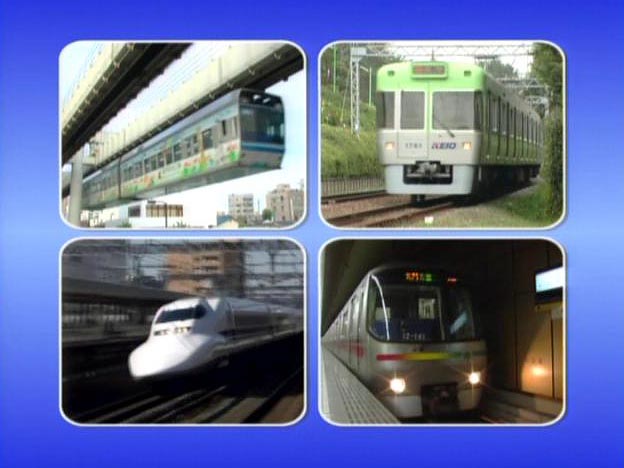 Train 2
Train 2
In Japan, there are many kinds of trains: commuter trains, bullet trains, subways, monorails and so on.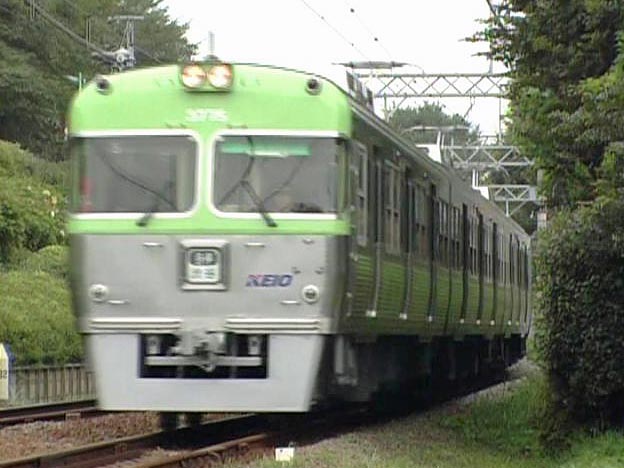 Train 3
Train 3
There are many train companies in Japan, and many people use trains. When people go to their companies and schools or on a trip, many go by train.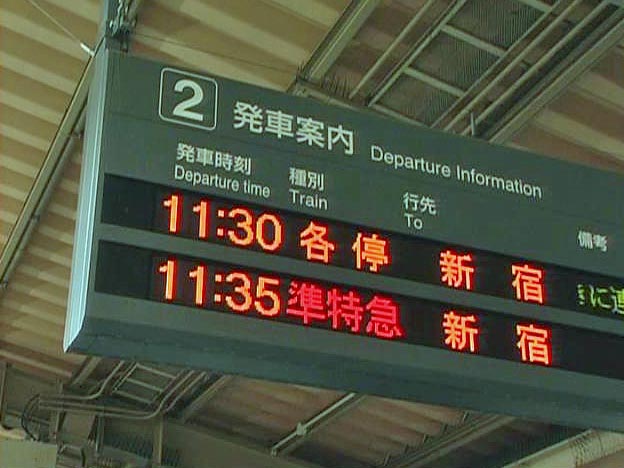 Departure information
Departure information
This is a train information board. Trains are very punctual. On the information board, the next train's destination and departure time are easily found, and some boards indicate which stations the train stops at.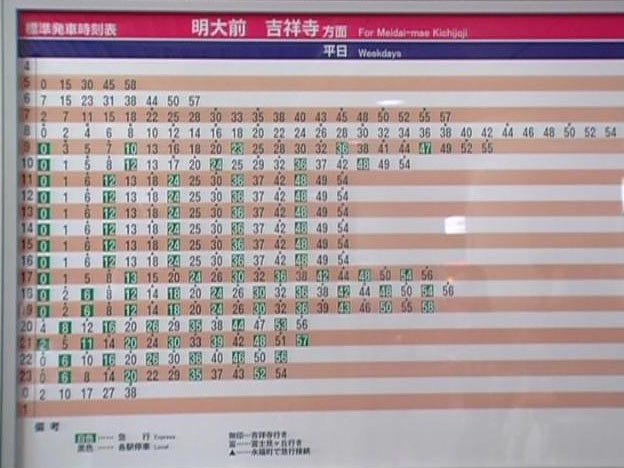 Train timetable
Train timetable
There is a lot of time information at stations. This is a train timetable. It tells you exactly what time the train is scheduled. During busy times in the morning and early evening, more trains are scheduled.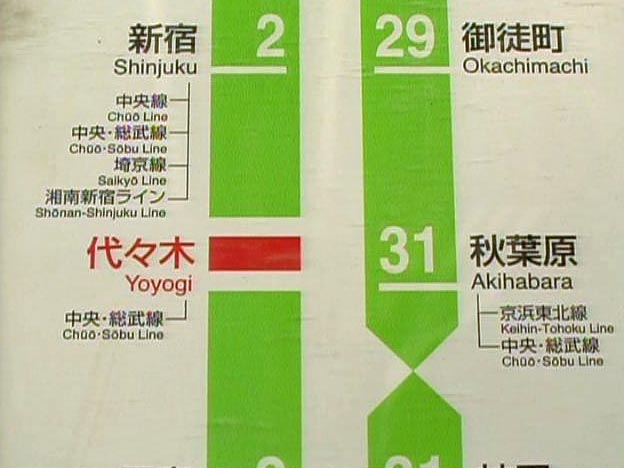 Signboard of required times
Signboard of required times
This sign shows how long it takes from the station where you are to your destination station. The sign also shows at which station you can transfer.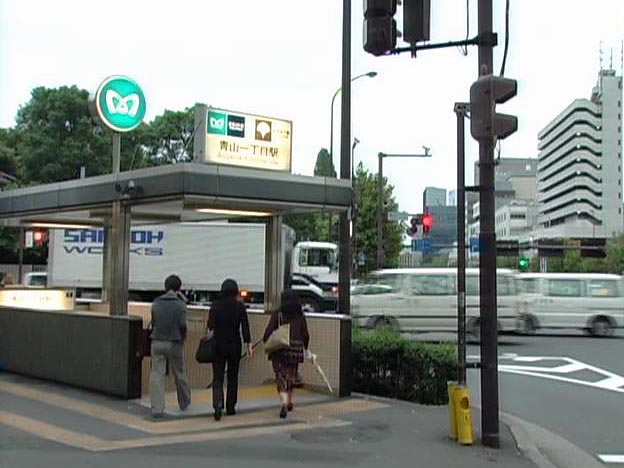 Entrance to a subway station
Entrance to a subway station
This is an entrance to a subway station. The subways run under streets; therefore, remembering this subway sign helps you easily find the entrance to the subway.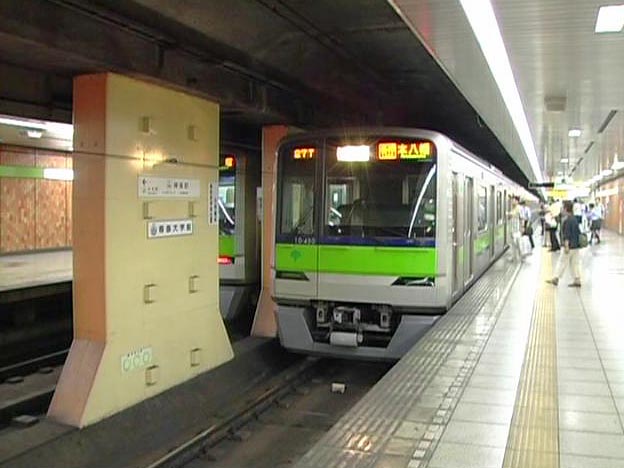 Subway
Subway
In large cities, subways form a major transportation system. Subways are very punctual, just like trains running at ground level. On a platform, there are a white tiled warning line and yellow Braille blocks. The trains keep to the left, just like cars in Japan.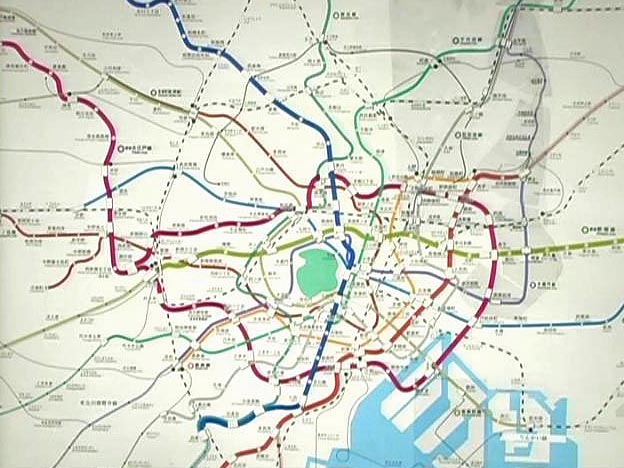 Subway route map
Subway route map
This is a route map of Tokyo. Central Tokyo is covered with an elaborate network of many subways. There are 13 subway lines running altogether, and they are divided into two groups. One group is operated by a private company, Tokyo Metro, and the other is operated by Toei Subway under the Tokyo metropolitan government. By subway, you can go anywhere you want within the 23 wards of Tokyo.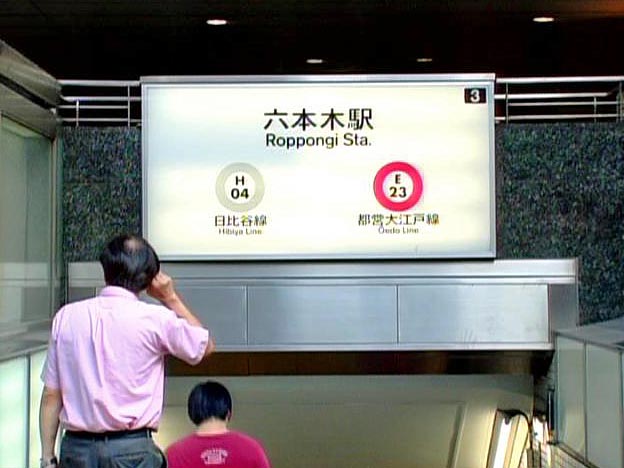 Entrance of Roppongi Station
Entrance of Roppongi Station
Tokyo subways run deep below ground. Newer subways run even deeper. Every subway line has a specified color, so that looking for the color of the line that you want to take makes finding the line easier when you see the information board at the station's entrance or on a platform.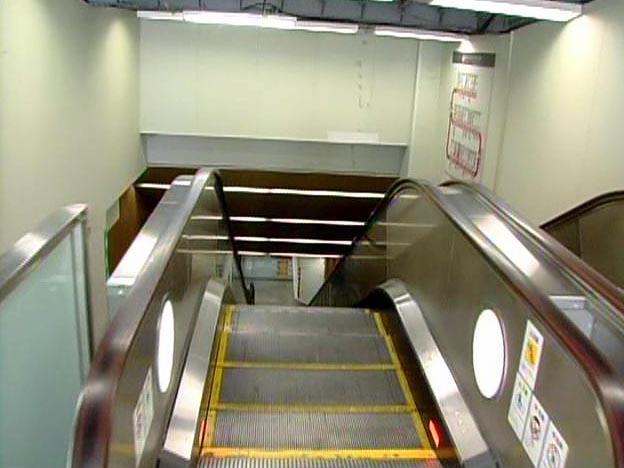 Escalator 1
Escalator 1
We take the escalator to go to the platform. Recently, more and more stations have escalators.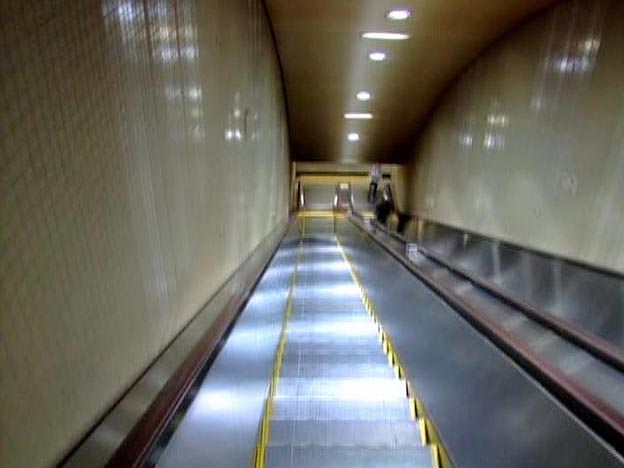 Escalator 2
Escalator 2
At a station that is deep below ground, we ride several long escalators, and we also walk through long passages to get to the platform. In Tokyo, people stand on the left side of the escalator, and people in a hurry walk up or down the right side; in Osaka people do the opposite.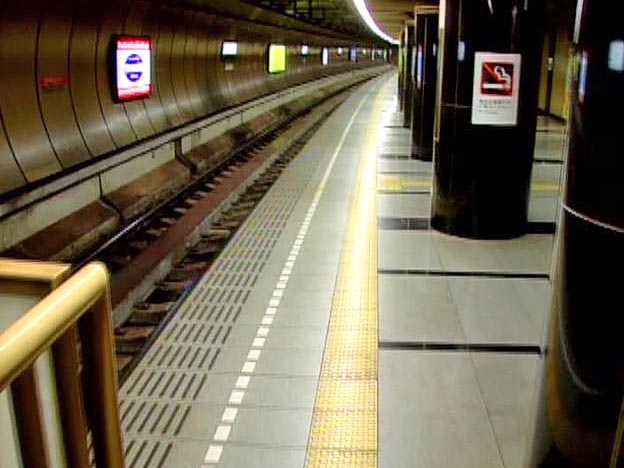 Platform of Roppongi Station
Platform of Roppongi Station
Roppongi Station on the Ooedo subway line is 42 meters below ground, and its platform is the deepest in Japan. There is a No Smoking sign. Smoking is prohibited in all stations in Tokyo.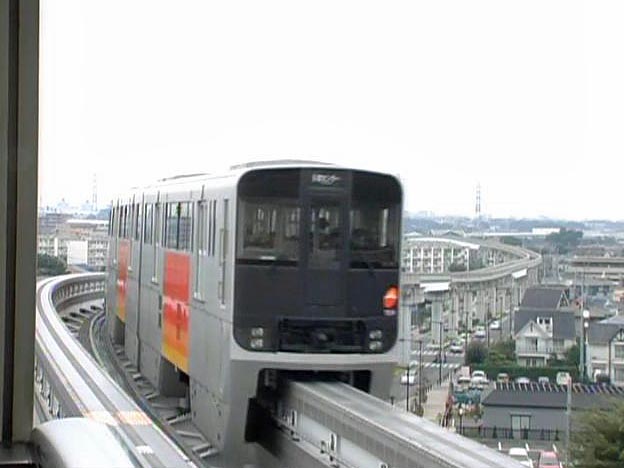 Monorail 1
Monorail 1
A monorail is a train running on a single rail. They are cheap to construct, so many new monorails are being built in the suburbs of Tokyo.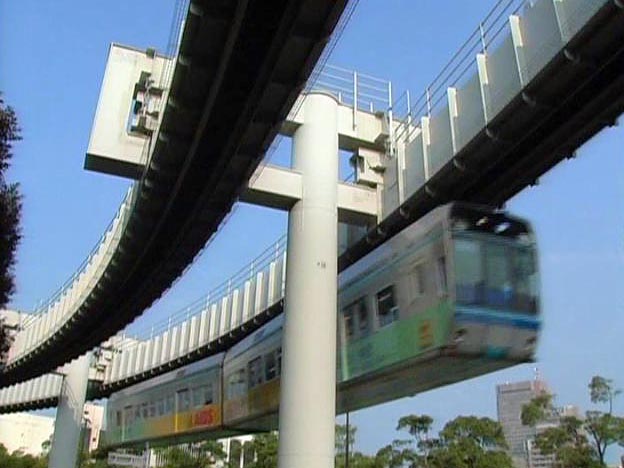 Monorail 2
Monorail 2
Some monorails run under the rail.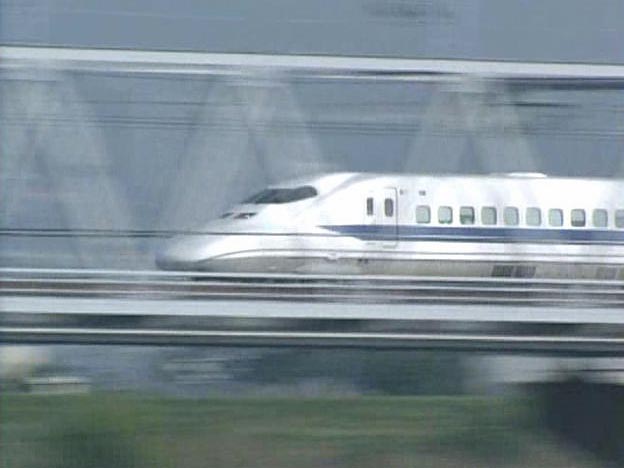 Bullet train 1
Bullet train 1
The bullet train is the fastest train in Japan. The bullet train Nozomi runs between Tokyo and Osaka in two hours and thirty minutes. In order to achieve high speed, the head of Nozomi is tapered.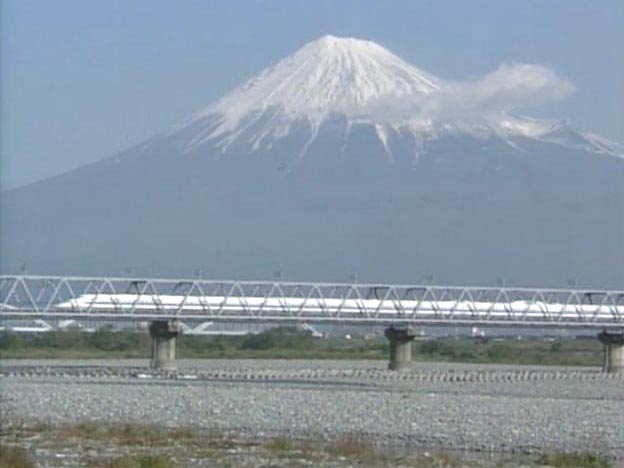 Bullet train 2
Bullet train 2
Bullet trains connect various cities in Japan. At present eight bullet train lines are running ? the Tokaido, Tohoku, Joetsu and so on. Mt. Fuji can be seen from the window of the Tokaido bullet train.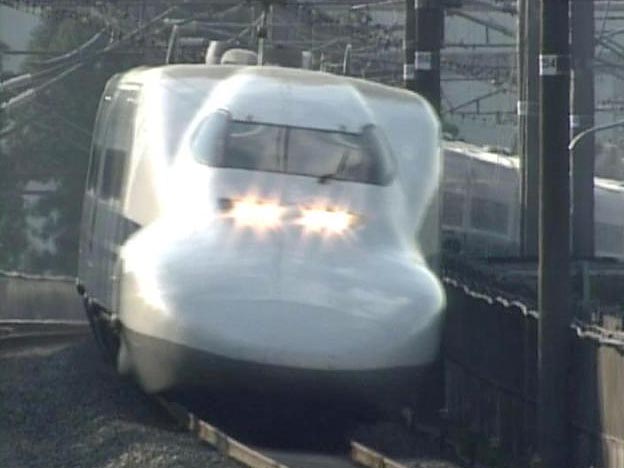 Bullet train 3
Bullet train 3
The fastest bullet train runs at 300km/h.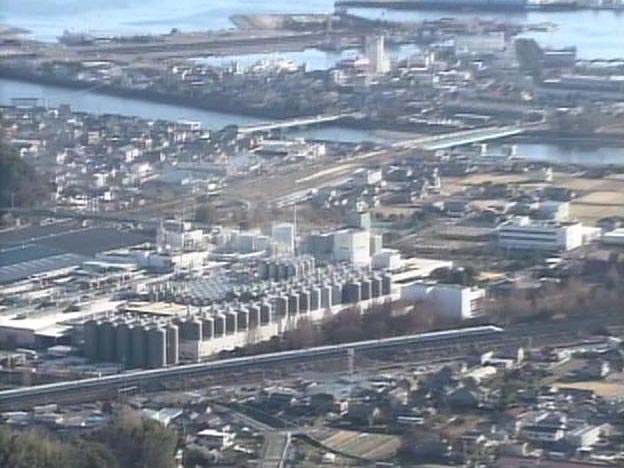 Bullet train 4
Bullet train 4
Because the bullet trains are very fast, many people use them. Among all means of transportation in Japan, trains are very important.

